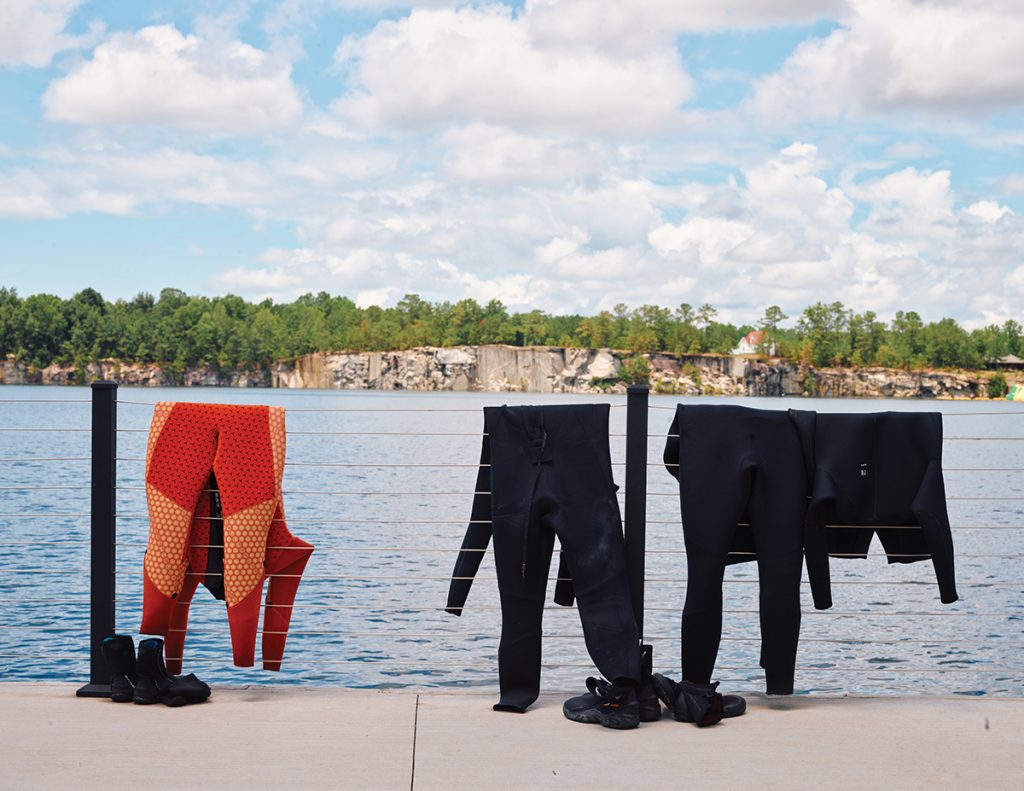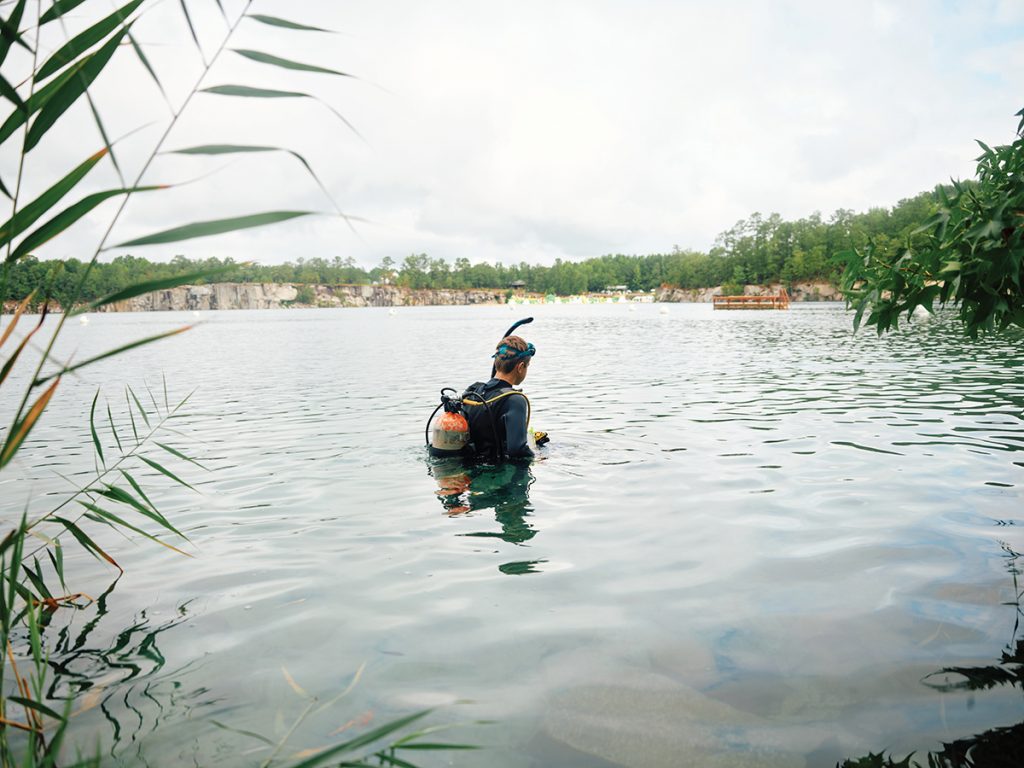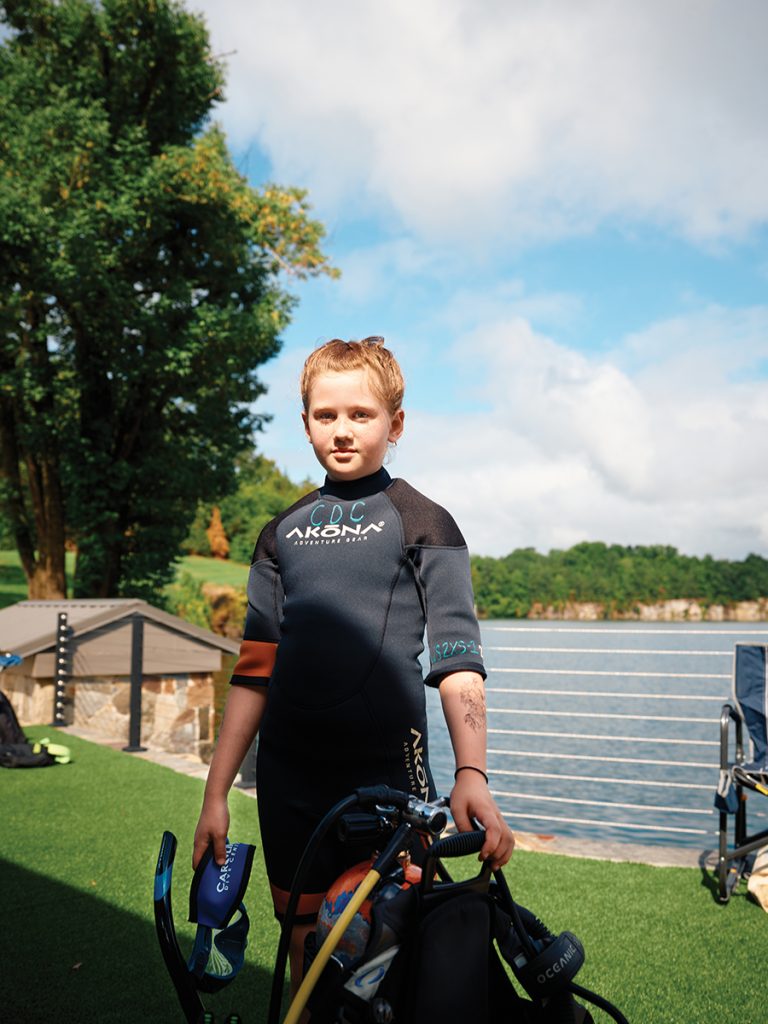The Triangle is a surprising hot spot for divers who explore shipwrecks, hunt for shark teeth and enjoy the serenity of gliding underwater.
by Jordan Lee | photography by Joshua Steadman
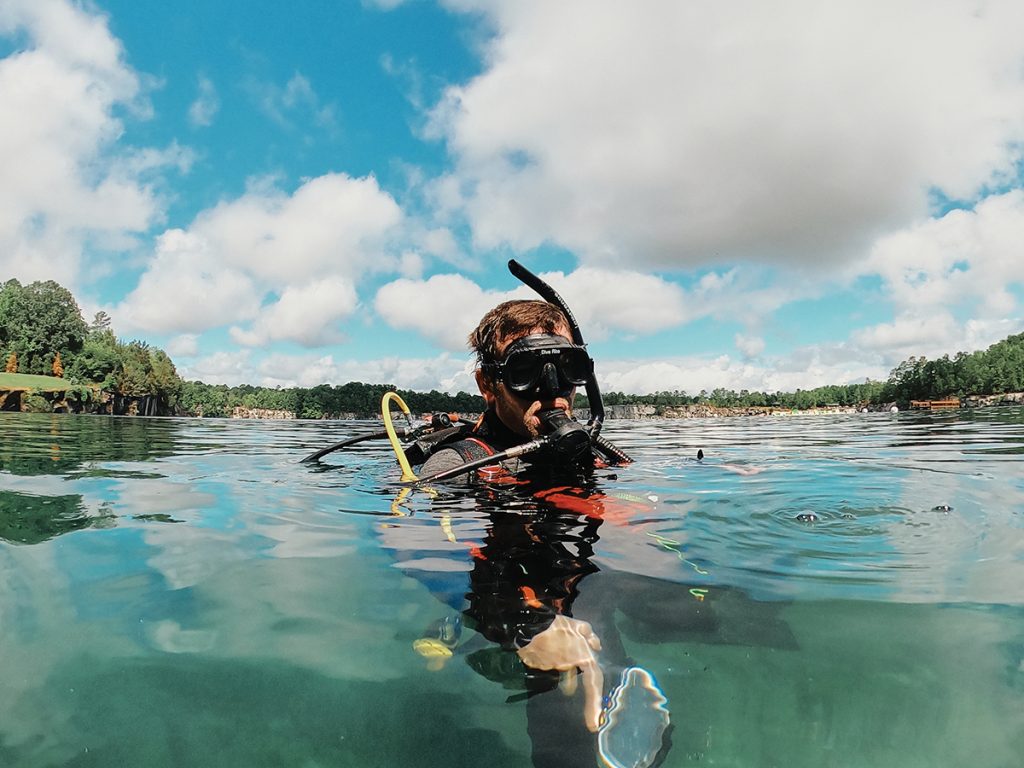
The manta ray glides so close, it nearly touches my scuba mask. The bubbles from my regulator bump into its tuxedo underbelly and dance between its curved wings before escaping to the blue depths. The ray’s arched wingspan, easily 10 feet wide, blocks the sun’s glow like a canopy. Here in Raja Ampat, Indonesia — halfway around the globe from Raleigh — I experience an otherworldly sense of solitude and astonishment.
Just a few months prior, I swore diving was something I’d never attempt — it seemed terrifying. But proper training and practice changed everything for me.
It may come as a surprise, but North Carolina is a premier center for scuba diving. You can dive shipwrecks almost the entire coast from Nags Head to Southport: highlights include the wreck of German submarine U-352 from WWII, Blackbeard’s ship Queen Anne’s Revenge and the USCG Cutter Spar. If you’re more into sharks than shipwrecks, our coast is known for being a great spot to find fossilized shark teeth — particularly at the Meg Ledge, an area about 30 miles offshore from Wrightsville Beach that’s famous for unearthing the 3-million-year-old teeth of the Carcharocles megalodon, the mega-toothed shark that had teeth up to 7 inches long. The depths of our coastal waters boast dive-worthy aquatic life including Atlantic spadefish, amberjack, giant southern stingrays and sharks.
Here in Raleigh, two dive shops reign supreme: Gypsy Divers and Carolina Dive Center. They have a rare and special relationship as “competitors” because, in reality, they support each other to grow the local diving community.
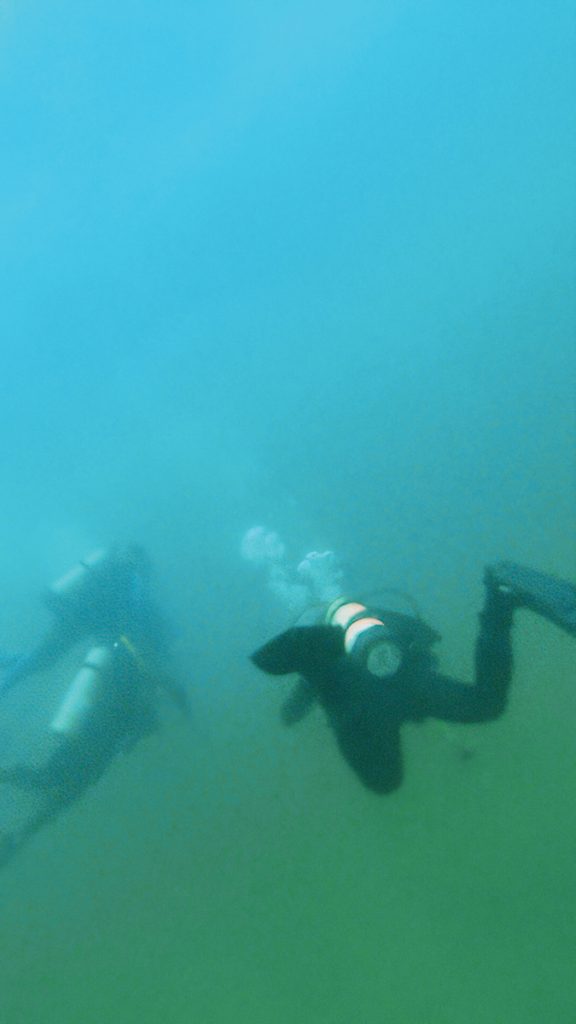
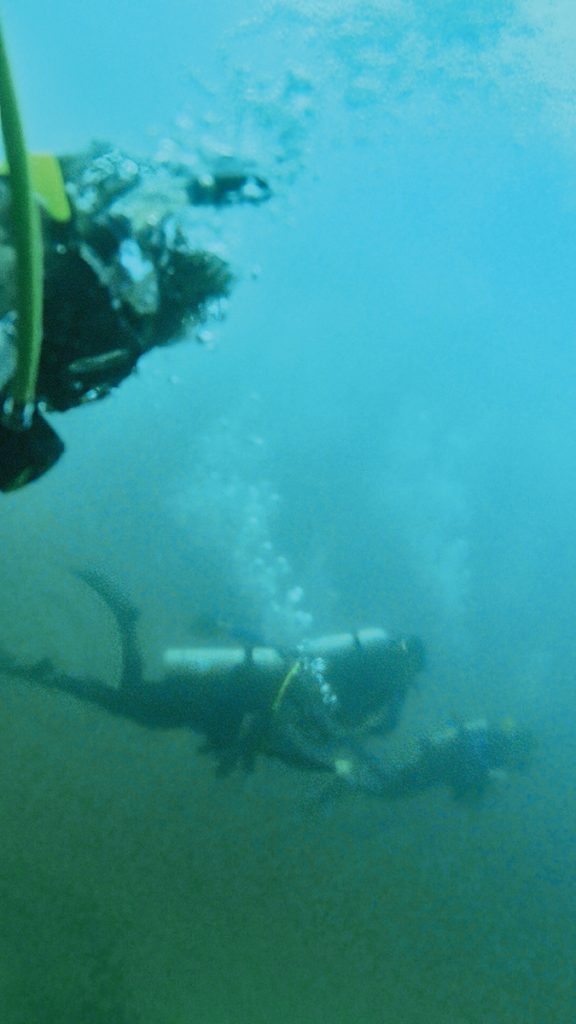
Gypsy Divers was founded by Margie Rhodes and Dave Ferrar in 1984 and is now owned and managed by lifelong diver Billy Harloff, who joined Gypsy in 2011 as part-time summer help. “I love diving because you get the chance to see some amazing animals and every dive is completely unique,” he says. Harloff leads a team of five full-time employees, 10 dive instructors and 10 divemasters, in addition to housing a scuba service center and swim program. They offer Scuba Schools International (SSI) scuba certification.
Carolina Dive Center (CDC), which offers PADI (Professional Association of Diving Instructors) certification, is owned and operated by Jim Sedore, who’s known as “Captain Jim.” Sedore, a former corporate executive, quit his job to open CDC 20 years ago.
“I cannot believe this is my life,” he says. “I teach scuba and travel the world.” During my visit to the dive shop, CDC course director Zachary Matthew handed me a megalodon shark tooth approximately the size of a coffee saucer. He’d found the relic that weekend off the coast of North Carolina — and it wasn’t his first. “Searching for fossils underwater always gives me an adrenaline rush. When you discover that perfect tooth, it makes any previous disappointment fade away,” says Matthew.
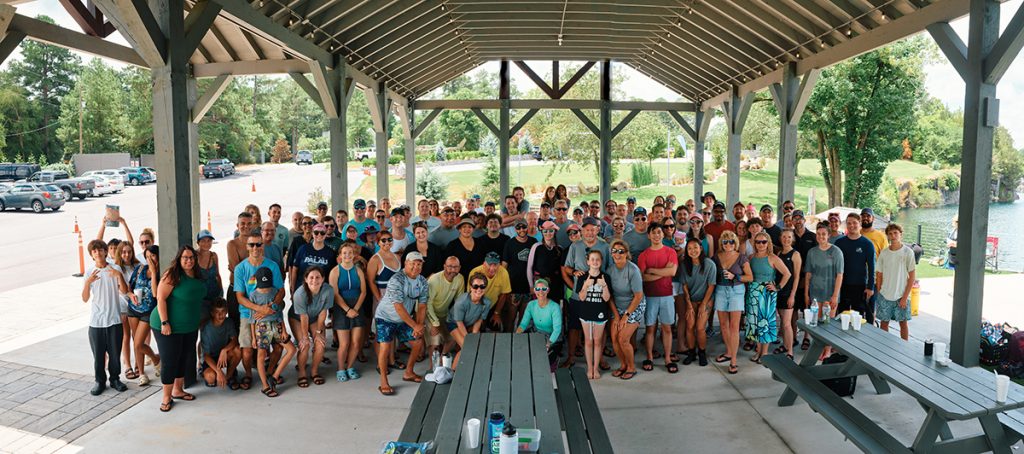
For Matthew, a combat veteran who has dealt with PTSD, scuba has been a saving grace. “Diving has transformed my life for the better,” he says. “Reconnecting with nature and spending time alone with my thoughts underwater has been incredibly healing. One of my main motivations for becoming a scuba instructor is to help others experience these therapeutic benefits.”
Both SSI and PADI certifications entail academic and classroom courses, followed by hands-on, gear-laden skills training. The majority of skills training takes place in silence at the bottom of a swimming pool. “Confined water training helps a beginner learn and demonstrate skills necessary to dive deeper to 60 feet,” says Sedore.
Geared up from tank to fins, students work with instructors to practice skills like clearing a flooded mask, adjusting a lost regulator or making an emergency ascent. After a discussion at the surface of what is to be practiced underwater, student and instructor descend and switch to communicating via scuba sign language.
A particular challenge underwater is maintaining buoyancy, which is your underwater altitude. A big inhale and you float to the top; too much exhale and you drift downward. Arturo Marchand of Gypsy Divers was my fearless and talented scuba instructor. “Helping students gain mastery of a skill that causes anxiety is very rewarding,” says Marchand. Following completion of pool-based skills, certifications require check out dives in non-pool settings.
Around here, they’re usually at Fantasy Lake Adventure Park, a 65-acre lake in Rolesville that formed when a quarry sprung a leak in 1950. Open year-round, Fantasy Lake provides space for divers to practice or just enjoy the sport. “It’s probably the nicest scuba park on the east coast,” says Sedore.
For Marchand, who’s logged more than 2,000 dives in his lifetime, diving is “first and foremost, fun.” He’s even passed his love for the sport on to his son, who, at age 12, has already logged almost 50 dives.
What they and I have discovered is that diving offers a unique opportunity to experience both adventure and tranquility — often at the same time. “It’s quiet down there with nothing to do but watch the world go by,” says Harloff. “You can explore in 3D so easily, and everyone can use a little bit of peace.”
This article originally appeared in the August 2024 issue of WALTER magazine.

